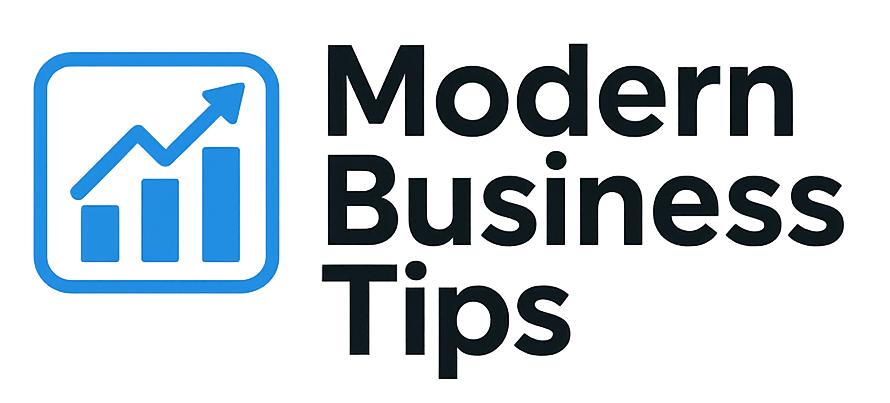Ecommerce has changed how we buy and sell things. With global sales expected to reach $6.86 trillion by 2025, now is a great time to dive into ecommerce. Whether you want to start a business or just make some extra cash online, there are many ways to do it.
You can try print-on-demand services, reselling, or affiliate marketing. These options are easy to get into and can help you earn money. So, if you’re ready to take the first step, there’s a lot to explore.
Key Takeaways
- Embrace the opportunity of ecommerce as a way to make money.
- Look into different ways to make money online through ecommerce.
- Think about selling print-on-demand products for low startup costs.
- Use affiliate marketing to earn more without worrying about inventory.
- Find your target audience to offer products they’ll like.
- Keep up with market trends to stay ahead in ecommerce.
Understanding the Ecommerce Landscape
Ecommerce has changed how we buy and sell online. It offers many models for different needs and interactions. Knowing the ecommerce landscape is key for success in this market.
What is Ecommerce?
Ecommerce means doing business on the internet. It covers both physical and digital goods. Whether it’s retail or wholesale, the goal is the same: to sell online. Understanding the types of ecommerce models is vital for success.
Types of Ecommerce Models
The ecommerce world has several main models:
- B2B (Business to Business): Companies sell to other businesses.
- B2C (Business to Consumer): Businesses sell directly to consumers.
- C2C (Consumer to Consumer): Platforms like eBay and Etsy for consumer-to-consumer sales.
- C2B (Consumer to Business): Individuals sell to businesses.
Knowing these models helps me target the right audience and plan my marketing.
Trends Influencing Online Sales
To stay ahead in ecommerce, I must follow trends influencing online sales. Important trends include:
- Mobile Shopping: More people buy on smartphones and tablets.
- Personalized Experiences: Customized marketing boosts customer engagement.
- Social Commerce: Instagram and TikTok are key for selling, blending shopping with social media.
By embracing these trends, I can meet customer needs better. Each trend is important for my strategy and staying competitive.
Finding the Right Niche for My Business
In today’s ecommerce world, finding a profitable niche is key to success. It begins with spotting market gaps where demand is high but supply is low. By doing deep market research, I can find these gaps and learn a lot.
Knowing how to check out the competition helps me place my products right. This way, I can stand out from others.
Identifying Market Gaps
Finding market gaps needs careful watching and studying of trends. It’s important to look at what customers want but can’t get from current products. Tools like surveys and trend reports can show where there’s a need.
Getting to know these gaps helps me create a unique selling point. It’s the first step to making my business stand out.
Evaluating Competition
Looking at competitors is a key part of my ecommerce plan. I examine both direct and indirect rivals to see their good and bad points. This helps me figure out how to make my products different.
It also shows me how to better connect with customers. This is important for keeping them happy and coming back.
My Passion vs. Profitability
It’s important to mix my personal interests with what makes money. While following my passions is rewarding, they must also be profitable. I aim to find niches that excite me and meet customer needs.
This approach helps me build a genuine brand. It’s one that shoppers can really connect with.
Setting Up My Ecommerce Platform
Choosing the right ecommerce platform is key to my success. Shopify and WooCommerce are top choices, each with its own strengths. Knowing what each offers helps me pick the best one for my business.
Choosing Between Shopify, WooCommerce, and Others
Shopify is known for being easy to use and packed with features. WooCommerce, on the other hand, lets you customize your store to fit your needs. I need to think about:
- Ease of setup
- Integration with other apps
- Cost and fees
- Support and community help
Essential Features for My Store
A good ecommerce store needs key features for a great user experience and easy management. Important things to look at include:
- Easy navigation
- Good product management tools
- Mobile-friendly design
- Strong security for customer data
Setting Up Payment Gateways
Adding payment gateways is a big step in setting up my store. It makes checkout smooth and safe for customers. PayPal, Stripe, and Square are popular for:
- Many payment options
- Secure transaction protocols
- Easy setup with different platforms
Building a User-Friendly Website
Making a website easy to use is key for a good online shopping experience. I focus on website design importance by making it look good, easy to navigate, and work well. These things help keep customers coming back and happy.
Importance of Website Design
A good website draws in and keeps customers. It builds trust and makes users want to look more. Things like colors, fonts, and pictures are important for a user-friendly site. When I pay attention to these, more visitors become loyal customers.
Optimizing for Mobile Users
Most of my visitors use mobile devices. So, making my site work well on phones is a must. Responsive design means my site looks good on any screen size. This makes users stay longer and come back more often. It’s key to succeed in online shopping today.
Enhancing Load Speeds
How fast a website loads is very important. Slow sites make people leave and miss out on sales. By making images smaller and using browser caching, I can make my site faster. A quick site shows I care about quality and makes customers come back.
| Design Element | Impact on User Experience |
|---|---|
| Color Schemes | Affects mood and engagement levels. |
| Navigation | Guides users efficiently, reducing frustration. |
| Speed | Keeps users on the site, boosting sales. |
| Mobile Responsiveness | Makes the site easy to use on any device, attracting more users. |
Sourcing Products for My Ecommerce Store
Finding the right products is key to my ecommerce store’s success. I must choose between drop shipping and managing my own inventory. Each option affects how I run my business and my profits. Knowing the pros and cons helps me plan the best strategy.
Drop Shipping vs. Inventory Management
Drop shipping is a low-risk option. It lets me sell products online without storing them. This way, I can quickly adapt to market changes. But, managing my own inventory gives me more control over stock and prices.
Choosing to manage inventory myself might cost more upfront. Yet, it can lead to higher profits in the long run.
Finding Reliable Suppliers
Finding trustworthy suppliers is vital for quality and consistency. I look at different platforms and industry events to find vendors. Building strong relationships with suppliers can get me better prices and special deals.
Checking supplier reviews and feedback from other businesses is important. It helps me make sure I’m working with the best.
Negotiating Wholesale Pricing
After finding suppliers, I focus on getting the best wholesale prices. Good negotiation can cut down my costs and increase my profits. I use strategies like buying in bulk or making long-term deals to get better prices.
Being able to negotiate well not only helps my finances. It also strengthens my relationships with suppliers.
Creating Compelling Product Listings
To grab and keep customer interest, making product listings carefully is key. This means writing descriptions that show what the product does and why it’s good. Great listings mix creativity with clear info, letting customers see how the product fits into their lives.
Writing Engaging Descriptions
Descriptions should show what makes each product special. I add sensory details, benefits, and emotional hooks. This way, buyers are more likely to feel a connection and want to buy.
Photography Tips for Product Images
Good product images are vital for attracting customers. Clear, well-lit shots from different angles show the product’s value. I aim to make each photo a true representation of the product, building trust with buyers.
Utilizing User-Generated Content
Using content from customers adds credibility. Reviews, testimonials, and photos from customers are powerful. I add this content to listings to build a community, making new customers feel sure about their choices.
| Content Element | Importance | Best Practices |
|---|---|---|
| Product Descriptions | Convert visitors to buyers | Focus on benefits, use sensory language |
| Product Images | Build trust with visuals | High-quality, accurate representations |
| User-Generated Content | Enhance credibility and connection | Incorporate reviews and customer photos |
Marketing Strategies for Ecommerce Success
To succeed in ecommerce, I need to use effective marketing strategies. These strategies should connect with my target audience. A mix of approaches will boost my brand, engage customers, and grow sales.
Leveraging Social Media
Social media is key for reaching out to customers. Sites like Instagram, Facebook, and Twitter help me show off my products. By sharing great content and posts from customers, I can make my brand more visible.
By talking to followers, I build loyalty. This makes my business feel like a community.
Running Effective Email Campaigns
Engaging with current and new customers is vital. I can send emails that match what they like. This includes special offers, new products, and personalized tips.
Such emails keep customers coming back. They also encourage them to buy more.
Search Engine Optimization (SEO) Tactics
Good SEO makes my site easier to find online. I start by finding the right keywords and making my site easy to use. Fast loading times and being mobile-friendly also help.
| Marketing Strategy | Key Benefits | Best Practices |
|---|---|---|
| Social Media Marketing | Boosts brand awareness and customer engagement | Post regularly, use visuals, engage with followers |
| Email Campaigns | Enhances customer retention and drives sales | Segment audience, personalize content, monitor analytics |
| SEO Tactics | Improves search visibility and increases organic traffic | Keyword research, optimize meta tags, ensure mobile-friendliness |
Understanding Customer Behavior
It’s key to understand how customers behave to make marketing that speaks to them. By looking at what they buy, I learn a lot. This helps me suggest products better and make ads that really hit the mark.
Analyzing Purchase Patterns
Looking at what customers buy helps me spot trends. I see what they often get together and when they buy most. This info helps me make better ads and manage stock better.
Gathering Customer Feedback
Listening to what customers say is super important. Surveys and reviews give me real feedback. This helps me make changes that make customers happier.
Building Customer Relationships
Building strong bonds with customers is key. I focus on personal touches to make them feel special. This not only keeps them coming back but also saves me money on new customers.
| Method | Benefits | Impact on Customer Relationships |
|---|---|---|
| Analyzing Patterns | Identifies trends to tailor promotions | Improves customer satisfaction through relevance |
| Gathering Feedback | Provides insights into customer preferences | Enhances trust and communication |
| Building Relationships | Encourages repeat business | Fosters long-term loyalty and trust |
Implementing Effective Sales Strategies
To grow revenue, I use sales strategies that appeal to my audience. These include discounts, bundling, and upselling to boost customer satisfaction and sales.
Discount Offers and Promotions
Discounts are great for attracting new and rewarding loyal customers. I run promotions and offer special discounts to create a sense of urgency. This encourages customers to buy faster.
For example, seasonal sales during holidays can increase store traffic and visibility.
Bundling Products for Increased Sales
Bundling related products together adds value and encourages bulk purchases. I offer bundles at attractive prices to persuade customers to buy more. This strategy increases average order value and saves customers money.
Upselling and Cross-Selling Techniques
Upselling and cross-selling help maximize sales. I suggest higher-value or complementary products during checkout. This approach creates a personalized shopping experience, leading to customer satisfaction and loyalty.
Managing Inventory and Fulfillment
In my ecommerce journey, managing inventory and fulfillment is key to success. I use tools to keep track of stock levels. This ensures I have just the right amount, which keeps customers happy.
Inventory Management Tools
I use several tools to manage my inventory better. These platforms help me see what products are in demand and manage stock levels. I look for features like real-time tracking, stock alerts, and integration with my ecommerce site.
These tools make my job easier and boost productivity.
Understanding Shipping and Handling
Shipping and handling are important in my ecommerce business. I offer different shipping options to meet customer needs. Knowing the logistics helps me deliver on time and save money.
Choosing reliable carriers is key to keeping customers happy. Happy customers come back, which is good for business.
Returns and Customer Service Policies
Having clear return policies builds trust with customers. I make sure to explain return processes clearly. This makes customers feel secure when they buy from me.
A good return policy improves customer experience and loyalty. It also helps my sales grow.
Tracking Performance and Analytics
Tracking performance and using analytics are key for a successful ecommerce business. Knowing how to set Key Performance Indicators (KPIs) helps measure success and improve strategies.
Setting Key Performance Indicators (KPIs)
I focus on metrics that give insights into my ecommerce operations when setting KPIs. Common ones include:
- Conversion rates
- Average order value
- Customer lifetime value
- Return on advertising spend
By watching these KPIs, I spot trends and make smart decisions to grow and improve my business.
Using Google Analytics for Insights
Google Analytics gives me deep insights into my ecommerce site. I can look at:
- User behavior on my site
- Traffic sources, like organic search and social media
- Conversion pathways that lead to sales
Using this data helps me track performance and improve my marketing strategies.
Making Data-Driven Decisions
Decisions based on data are essential for success. I use insights from tracking to:
- Adjust product offerings based on customer preferences
- Enhance marketing to target specific groups
- Improve website navigation for users
This way, my decisions are based on real data, helping me reach my ecommerce goals.
| KPI | Description | Importance |
|---|---|---|
| Conversion Rate | The percentage of visitors who make a purchase. | Shows how well I drive sales. |
| Average Order Value | The average amount spent per transaction. | Helps check pricing and marketing. |
| Customer Lifetime Value | The total revenue expected from a customer over their lifetime. | Guides efforts to keep customers and long-term strategy. |
| Return on Advertising Spend | The amount of revenue generated for every dollar spent on advertising. | Measures how well ads work. |
Scaling My Ecommerce Business
Looking to grow my ecommerce business, finding new opportunities is key. I can explore new markets, add more products, or improve what I already offer. By studying market trends and what customers want, I can choose the best path for my brand.
Automating tasks is a smart way to grow. It makes my business run smoother and lets me focus on new ideas and marketing. Using technology for things like managing stock and sending emails can save a lot of time and effort.
Also, adding more products and services is important for growth. This brings in new customers and keeps old ones coming back. It also increases my income and helps me stay strong in the market, leading to long-term success.



